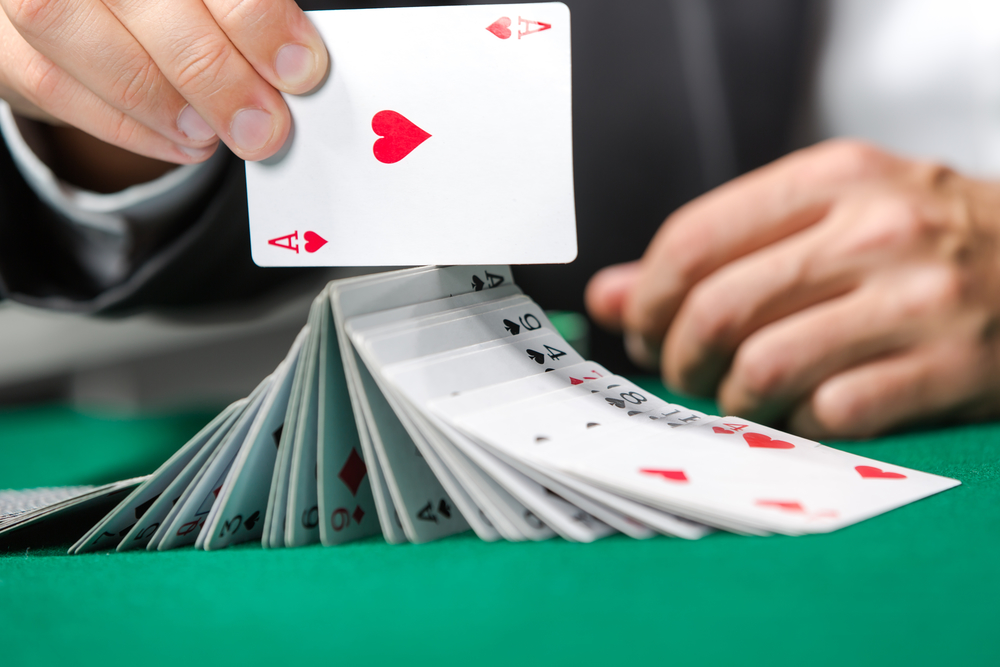Card games have been popular throughout the generations, and Escoba is one such game to have gained tremendous grounds especially in Latin America. With origins deeply rooted in the Italian variation called Scopa da Quindici, this card game has become a very important part of various cultures today. In many regions, it is also referred to as Escoba de Quince.
What is Escoba?
Escoba is a popular card game in Chile, Argentina, and Spain among other cultures. It was traditionally played among 2, 3 or 4 players. The name is derived from its Italian origination of a card game Scopa which essentially means ‘broom.’ It is a famous trick-taking game with a finite number of plays.
There are bonus scores awarded in this card game when a player effectively sweeps the table by capturing all face-up cards. The usual card deck used to play this game is the Spanish playing card. However, traditional decks consisting of 1 to 12 of each suit can be used by removing 8 and 9 of each suit. Similarly, a standard deck can be used by removing 8, 9 and 10 of each suit, leaving 40 cards behind.
How To Play
The objective of this game is to score 21 points at the earliest. A sweep is won by a player by capturing cards that add up to 15 points. Each card has a different score point associated with it. This means that a player who captures most number of cards does not necessarily win as compared to a player with high valuing cards. The players can play either in teams or alone when there are 4 players. The teams are traditionally positioned to sit opposite to each other.
Card Points
The points associated with a Spanish deck are different than traditional or standard decks. It can be very confusing for beginners who have never dealt with Spanish decks before.
- 1 to 7 have scores per their face value
- 8 Score is given to Jack (Sota)
- 9 Score is given to Horse (Caballo)
- 10 Score is given to King (Rey)
Scoring
A fixed point is awarded for the four following factors.
- Cards (Cartas)–Player or team with the most cards in their score pile
- Coins (Oros) – Player or team with the most cards of the coin suit
- Seven (Cards)–Player or team with the most 7
- Seven of Coins (Guindis)–Player or team with the 7 of coins.
There is an additional point given for prime scoring in which ranking consists of 7s, 6s, As, 5s, 4s, 3s, 2s, pictures. 7s are the highest scorer and pictures are the lowest. However, the complete prime construction is considered while awarding this point. Whichever player or team makes the higher prime construction as to the ranking of cards wins the point. For example, prime of 7, 7, 6, 5 can beat 7, 7, A, A prime whereas 7, 7, 6, 5 cannot beat 7, 7, 6, A.A point is not awarded in case there is a tie among the players or teams.
Opening Deal
The first dealer is suggested at random by cutting cards or some other method. Three cards are dealt face down to each player starting from the dealer’s right. After each player has been dealt in this counter-clockwise manner, four cards are dealt face-up, and remaining cards are kept near the dealer for future dealing.
This is referred to as the opening deal. In case the four cards add up to 15 points it becomes an Escoba for the dealer and the player to the right plays to anempty table. This is an extremely special event.
The deal is passed to the player on the right once the stack of 40 cards is exhausted.
The Play
The play begins with the player sitting to the right of the dealer. The play continues anti-clockwise until all cards have been played. Each player throws one card on the face-up pile in the center of the table. Each play is motivated by totaling the card points to 15.
Cards are continued to be thrown face up on the pile until a capture is made. Once all players have exhausted their 3 cards, the dealer deals additional 3 cards. However, this time no cards are dealt to the table. There are 6 deals made if the game is played between two players and 3 deals made if a game is played among 4 players. The card game is played with only 40 cards that can make keeping a note of cards dealt easy.
When all cards have been played, and the pack is exhausted; the cards lying face up on the table are taken by the player that made the last capture. However, this is not considered an escoba. The scores are tallied up as per the cards captured by both sides, and the pack is reshuffled. The cards are dealt again as the opening deal by a new dealer.
Capture and Escoba
A capture is made when a player throws a card on the table that adds up to 15 when matched with all or some of the previously thrown cards on the table. It is not mandatory for a player to always aim for the capture. In fact, many times a good strategy is to just build the pile.
However, a player has to capture the cards mandatorily when they add to 15 on the table.
An escoba refers to a player completely sweeping the table clean by taking all cards. The cards are usually kept in front of the capturing side in a trick pile with the first card face up. This helps in distinguishing these piles from other captured cards. An additional point is awarded for such sweeps.
Tips, Strategies, & More
This card game is very fast and light. You need to pay constant attention to your opponent’s hand and judge every move.
Game Tips
Here are a few tips that can help you win a round especially while making a capture:
- Never play a card of high value as that will give your opponent a better chance to create a sweep. However, an exception to this is when you hold the complimentary card. For instance, if there are three 6 on the table with the 4th 6 with you, then you can rest assured that your opponent does not have a 6 to win.
- 6s should be captured as often as possible with 7s. In case the 7s are split, then 6s can come in very handy.
- Coins are very effective and can make your score high when the overall points are added up.
- Always play with a mind to increase your overall score. If you have two options while capturing cards, opt for the choice that will provide you with a higher score.
Strategies
There are many strategies that are used by expert players to win their hands and create a game.
- The 7 of coins is a very important card. Never miss out on an opportunity to acquire this card. It contributes to three other points while being a point all by itself.
- Never avoid winning a sweep. There is always a benefit in giving your opponent an empty table. The first card shall be thrown by the opponent providing you with an edge in the game. Not to mention that a full sweep in itself is equal to 1 entire point.
- Keep track of cards wherever possible. If you know the sweeps made, and the cards dealt, then it will be very easy for you to play a winning capture yourself. This way you can strategize to orchestrate a win.clock
Variations
There are many variations to this card game in different parts of the world. If the traditional method has become too boring or easy for you, then you can try your hand at these other approaches. A good way to make this game more interesting is by changing the way scoring is done.
- 2 points for cards is scored instead of 1 when the opponent has fewer than 10 cards, and the winning team has 30 cards. This game is played with only 40 cards; hence this variation can spice things up to a good measure.
- 2 points instead of 1 are awarded to the player that captures all 10 cards of the coin suit.
- 3 points are awarded to the player who captures all four cards of 7.
There is another variation of this game in Brazil which is referred to as Escova. The objective changes to a player winning the game when a total score of 31 is attained. The rules of capture are same with the cards being added up to 15.
Conclusion
This Card game is an efficient way to use your mental faculties in a strategy by involving planning and organization. There are multiple chances to win this game even if you are not dealt lucky cards. By understanding the layout of cards and making a mental note of the cards dealt, you can ensure your victory over your opponent.
A truly interesting aspect of this card game lies in its speedy delivery and swift conclusion. A good hand of this card game will not take more than 60 minutes to finish.

